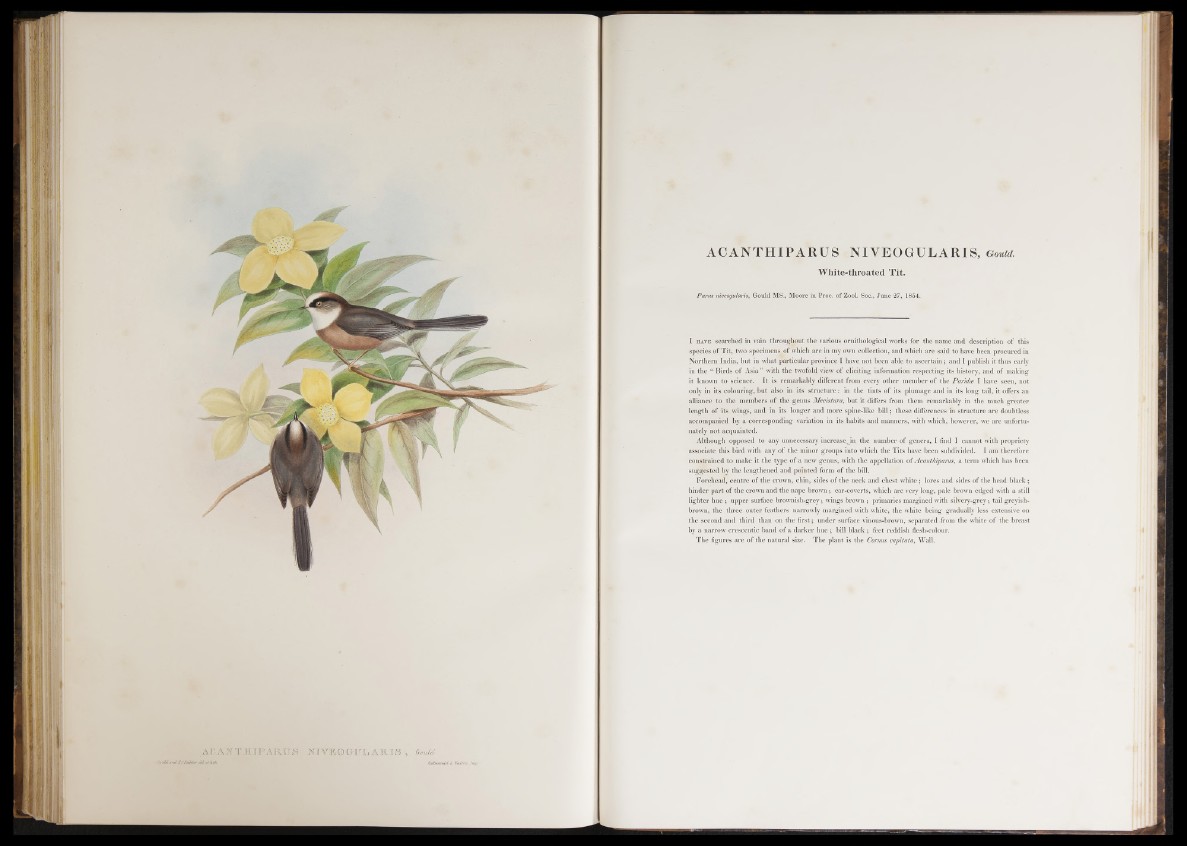
ACAKTHIPARUS WIVE© OUL AMS , :%euU
tiubJf.Cfhe/iier dd. d UlA JMbn*
A C A N T H I P A R U S N I V E O G U L A R I S , G o u l d .
White-throated Tit.
Partis niveogularis, Gould MS., Moore in Proc. of Zool. Soc., June 27, 1854.
I h a v e searehed in vain throughout the various ornithological works for the name and description of this
species o f Tit, two specimens of which are in my own collection, and which are said to have been procured in
Northern India, but in what particular province I have, not been able to ascertain; and I publish it thus early
in the “ Birds of Asia” with the twofold view of eliciting information respecting its history, and of making
it known to science. I t is remarkably different from every other member of the Paridce I have seen, not
only in its colouring, but also in its structure: in the tints of its plumage and in its long tail, it offers an
alliance to the members o f the genus Mecistura, but it differs from them remarkably in the much greater
length of its wings, and in its longer and more spine-like b ill; these differences in structure are doubtless
accompanied by a corresponding variation in its habits and manners, with which, however, we are unfortunately
not acquainted.
Although opposed to any unnecessary increasejm the number of genera, I find I cannot with propriety
associate this bird with any of the minor groups into which the Tits have been subdivided. I am therefore
constrained to make it the type of a new genus, with the appellation of Acanthipams, a term which has been
suggested by the lengthened and pointed form of the bill.
Forehead, centre of the crown, chin, sides of the neck and chest white; lores and sides of the head black;
hinder p art o f the crown and the nape brown; ear-coverts, which are very long, pale brown edged with a still
lighter hue ; upper surface brownish-grey; wings brown ; primaries m argined with silvery-grey; tail greyish-
brown, the three outer feathers narrowly margined with white, the white being gradually less extensive on
the second and third than on the first; under surface vinous-brown, separated from the white of the breast
by a narrow crescentic band o f a darker hue ; bill black ; feet reddish flesh-colour.
The figures are of the natural size. The plant is the Cornus capitata, Wall.